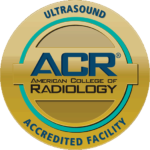
Millions of Americans are prescribed opioids each year to treat pain associated with surgery, injury, chronic conditions or to help relieve symptoms of illnesses such as cancer.
Unfortunately, this category of medications has been increasingly overprescribed, misused, and/or considered the only solution for pain, causing a nationwide epidemic.
It’s important to know there are other options.
For pain management, alternatives such as pain injections, physical therapy, or natural methods should be considered by both physicians and patients for pain caused by certain conditions such as chronic back or joint pain.
Pain Injections:
Pain injections are minimally-invasive and can be an effective way to manage pain symptoms. These injections are administered under image guidance, which means an imaging modality such as Fluoroscopy (XRAY), Ultrasound or Computed Tomography (CT) is used during the procedure to take pictures to guide the needle to the precise location for maximum benefit.
Pain injections can not only relieve pain symptoms but can also serve as a diagnostic tool. By monitoring how the patient responds to the injection, the doctor can often use the information to help determine the cause or source of the pain as well as guide further treatment.
There are several different types of injections that can be used depending on your individual circumstances. The type of injection is recommended by a physician based on the location, symptoms, and history of pain.
Epidural Injections (L Spine & C Spine)
Did you know that epidurals aren’t just for pregnant women? They can also be used to address chronic pain in the spine or extremities (arms and legs) caused by disc herniations and associated inflammation commonly experienced with conditions such as radiculopathy, degenerative disc disease and spinal stenosis. An injection of medication is introduced into the space around the spinal cord, also known as the epidural space. This results in temporary or prolonged relief from pain.
A CT scan is used to guide the needle injection to the exact location of the source of the pain.
On average, patients experience pain relief for weeks to months, at which point the procedure can be repeated as needed up to six times per year (3 times in any given 6 month period).
Read more at RadiologyInfo.org: https://www.radiologyinfo.org/en/info.cfm?pg=epidural
Facet Injections
Facet joint injections are most commonly used to treat and/or diagnose back or neck pain.
Facet joints, located in pairs on the side of each vertebra in the neck and back, allow for motion (twisting and bending) and provide support and stability in the spine. Injury or conditions such as arthritis may cause inflammation within these joints resulting in pain.
This procedure is performed under the guidance of a CT scan. Through the needle, a combination of numbing anesthetic and anti-inflammatory steroid medication is injected into the facet joint to provide joint pain relief.
It may take up to 10 days for the medication to reduce pain and inflammation, with results lasting weeks to months. The procedure can be repeated as needed up to six times per year (3 times in any given 6 month period).
Read more at RadiologyInfo.org: https://www.radiologyinfo.org/en/info.cfm?pg=facet-joint-block
Nerve Blocks (L Spine, T Spine, C Spine Sacroiliac joint injection)
Pain can often come on suddenly like someone flipped a switch. But, wouldn’t it be nice if there was also an off switch? The purpose of a nerve block injection is to decrease inflammation or “turn off” a pain signal coming from a specific location in the body.
Though most often used to manage pain that originates from the spine, nerve blocks can also relieve pain in the neck, buttocks, arms and legs. Injecting numbing medications into the nerves hinders the transmission of pain signals.
This procedure can provide temporary relief to those who suffer from either acute or chronic pain. It also allows a damaged nerve time to heal itself from a state of constant irritation.
This procedure is performed under CT guidance.
Length of pain relief varies per patient but it is common for the time between repeated injections to increase with each treatment. The procedure can be repeated as needed up to six times per year (3 times in any given 6 month period).
Read more at RadiologyInfo.org: https://www.radiologyinfo.org/en/info.cfm?pg=nerveblock
Large & Small Joint Injections
Injections can be used to help patients manage pain in large joints such as the hip, shoulder and knee, as well as pain in small joints like the wrist.
During the procedure, any fluid build-up that is present is first removed to relieve pressure within the joint. Then, either an anti-inflammatory corticosteroid or hyaluronic acid is injected into the joint.
This procedure is performed under fluoroscopic or ultrasound guidance.
A patient typically feels relief within a few days of treatment. The average length of pain relief can range from 3-6 months. The procedure can be repeated as needed up to six times per year (3 times in any given 6 month period).
Natural Alternatives:
Depending on the severity of your pain, as well as how your body responds to treatment, some patients find that holistic methods are a suitable solution. Yoga, meditation, physical therapy and even consuming a whole-foods, plant-based diet, are options worth considering before turning to traditional pharmacological means.
Natural methods can also be utilized in conjunction with pain injections to help reduce pain and lessen the necessity of repeated procedures.
Pain Management Medical Team at UDMI:
Robert Bernstein, M.D., Ph. D.
For More Information:
Whether you are seeking relief from pain caused by an injury, a health condition, or following surgery, the goal is always the same–to reduce pain using as minimal intervention as possible.
To schedule a pain management consultation or appointment at University Diagnostic Medical Imaging, P.C. call 718-931-5620 or visit our website.
Resources:
American Pain Society – http://americanpainsociety.org/
American Academy of Pain Medicine – https://painmed.org/










